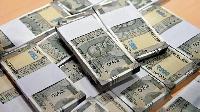
Snapshot
- There are four currency printing presses in India -Dewas, Nasik, Mysore and Salboni.
- Presses owned by Government’s SPMCIL are Dewas and Nasik
- Presses owned by RBI’s BRBNMPL are: Mysore and Salboni
- There are four mints for coin minting: Mumbai, Noida, Kolkata, and Hyderabad. All are owned by Government of India.
- The Maximum currency denomination that can be issued is Rs 10000; whereas the maximum coin denomination that can be minted is Rs 1000.
- Demonetisation is technically withdrawal of legal tender status of currency.
- Demonetisation should be recommended by the Director Board of the RBI and the Government ratification is the final step.
- The Department of Currency Management of the RBI designs currency notes and is ratified by the Director Board and finally by the Government.
(i) Who makes recommendation on currency design?
Government of India in consultation with the Reserve Bank of India decides the design of banknotes. In terms of Section 25 of RBI Act, 1934, the design of banknotes is required to be approved by the Central Government on the recommendations of the Central Board of the Reserve Bank of India.
On behalf of the Central Board, the Department of Currency Management makes the main design of bank notes. It also forecasts the demand for notes, and ensures smooth distribution of notes and coins throughout the country.
The Government of India is also responsible for the designing and minting of coins in various denominations.
(ii) Currency printing
Four printing presses actively print notes: Dewas in Madhya Pradesh, Nasik in Maharashtra, Mysore in Karnataka, and Salboni in West Bengal. The Dewas and Nasik presses are owned by the Security Printing and Minting Corporation of India (SPMCIL), a wholly owned company of the Government of India. The presses in Mysore and Salboni are set up by Bharatiya Reserve Bank Note Mudran Private Limited (BRBNMPL), a wholly owned subsidiary of the Reserve Bank.
Coins are minted by Government of India. RBI is the agent of the Government for distribution, issue and handling of coins. Four mints are in operation: Mumbai, Noida in Uttar Pradesh, Kolkata, and Hyderabad.
(iii) Notes and denominations
At present, notes are issued in denominations of: Rs. 5, Rs. 10, Rs 20, Rs. 50, Rs. 100, Rs 500 and Rs. 2000. In terms of the provisions of the RBI Act 1934, notes in denominations higher than Rs 10000 cannot be issued. As per the Coinage Act, 1906, coins can be issued up to the denomination of Rs 1,000.
(iv) Withdrawal of currency notes
Withdrawal of legal tender status is often called as demonetisation. It need a procedure from the part of the government and the RBI to make demonetisation
What is the procedure for withdrawing legal tender status?
About the withdrawal of legal tender status (the action is known as demonetisation) the Section 26(2) of the RBI Act 1934 says that on recommendation of the Central Board of the RBI, the central government may, by notification in the Gazette of India, declare that with effect from a date specified in the notification, any series of bank notes of any denomination shall cease to be legal tender.
According to response to an RTI, the 2016 demonetisation got the ratification of RBI Board hours before PM’s announcement.
*********









